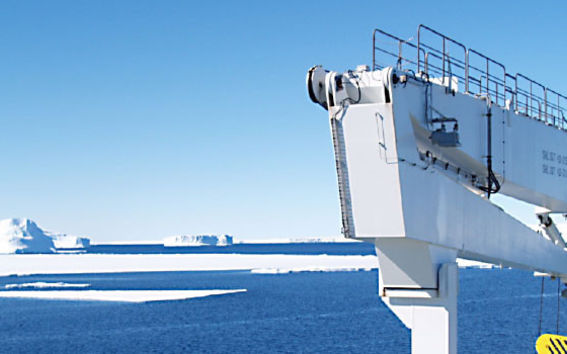Joint Research Centre of Excellence for Arctic Shipping and Operations

The Joint Research Centre of Excellence for Arctic Shipping and Operations (CEARCTIC) was funded by Lloyd’s Register Foundation and headed by Aalto University in cooperation with four other universities: the University of Helsinki, Hamburg University of Technology, the Norwegian University of Science and Technology and Memorial University of Newfoundland (St. John's, Canada).
Safe arctic operations and transport
The scope of CEARCTIC is the holistic treatment of design-relevant features and their identification to advance safe Arctic operations and transport. Holistic risk analysis typically includes the definition of hazard scenarios, their occurrence probability and consequences. For Arctic operations, the definition of all these three elements is challenging.
This holistic treatment will be achieved through a consistent link between these elements and analysis of their effects on the conceptual design phase. Further, this holistic risk-based design methodology will take a step ahead by explicitly identifying the scenarios and how to evaluate their occurrence probabilities and consequences applying first principle methods.
The novelty in this holistic risk-based approach is its focus on the design-relevant actions occurring during the entire life-cycle of the ship or installation, and not only on the initial service load conditions followed by a selection of required safety oriented assessments based on standard regulations.
Why Arctic Technology?
As a result of climate change, the industrial and political importance of northern areas is growing significantly, which can be seen in increasing research in the field of arctic technology, and also in growing international competition within the field.
The motivation for the CEARCTIC arises from the increasing interest in Arctic oil and gas exploration and mineral resources.
Current regulations for the design of ice-going ships do not predict their actual safety level; further, the required safety level both for ships and offshore installations is unknown.
Consequently, ships transiting ice-infested waters are not designed according to physical measures, i.e. accurate limit states under ice loading, but according to economic measures and empirical design measures.
Offshore installations should be designed according to accurate limit states; however, the actual ice load is uncertain and this is not possible at present. Risk-based design methodologies using first principal methods are required for safe operations and transport of natural resources within and out of the Arctic, because empirical measures are not available and the tendency to minimise expenditure can lead to severe environmental consequences.
Advisory Board
- Heike Deggim, Senior Deputy Director, International Maritime Organisation (IMO),
- Håkan Enlund, Sales Manager, RMC
- John Evensen, Senior Advicer, Norwegian Coastal Administration
- Rob Hindley, Principal Surveyor, Lloyds Register of Shipping
- Jorma Kämäräinen, Senior Maritime Inspector, Finnish Maritime Administration
- Charles Smith, Senior Technology Advisor (Arctic Engineering), Research & Development Corporation of Newfoundland & Labrador






